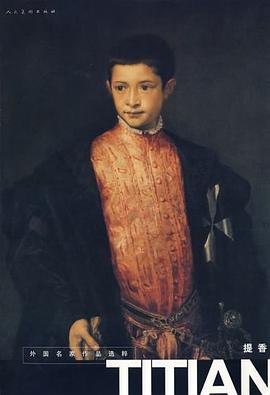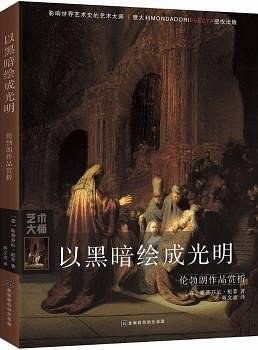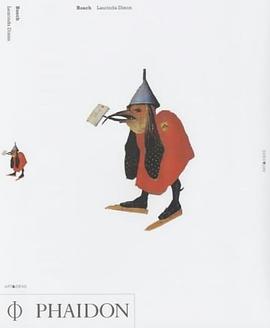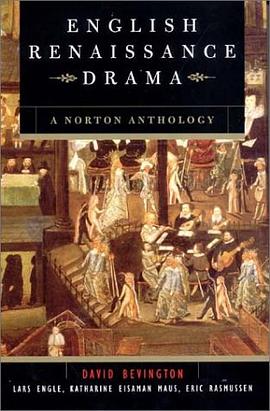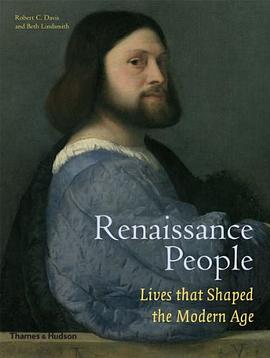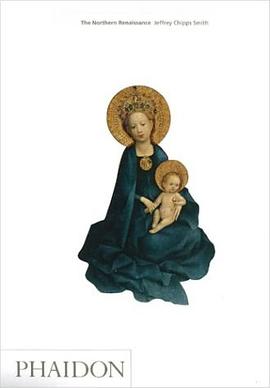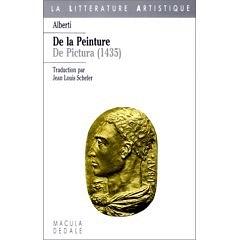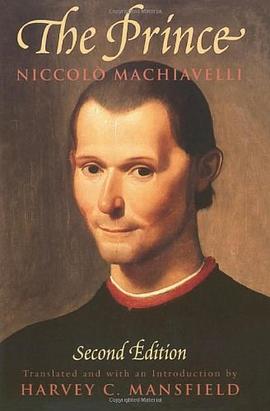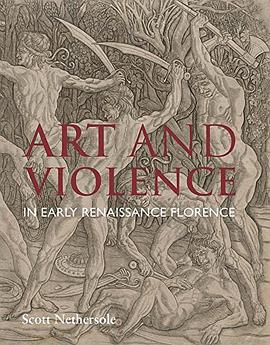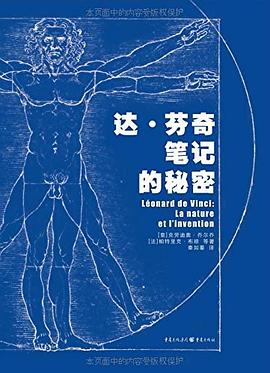

具体描述
One thing that greatly puzzled me when writing 1421 was the lack of curiosity among many professional historians.
After all, Christopher Columbus supposedly discovered America in 1492. Yet 18 years before he set sail, Columbus had a map of the Americas, which he later acknowledged in his logs. Indeed, even before his first voyage, Columbus signed a contract with the King and Queen of Spain that appointed him Viceroy of the Americas. His fellow ship’s captain, Pinzon, who sailed with him in 1492 had too seen a map of the Americas -- in the Pope’s library.
How do you discover a place for which you already have a map?
The same question could be asked of Magellan. The straits that connect the Atlantic to the Pacific bear the great Portuguese explorer’s name. When Magellan reached those straits, he had run out of food and his sailors were reduced to eating rats. Worse, they were convinced they were lost.
Esteban Gomez led a mutiny, seizing the San Antonio with the intent to lead part of the expedition back to Spain. Magellan quashed the mutiny by claiming he was not at all lost. A member of the crew wrote , "We all believed that [the Strait] was a cul-de-sac; but the Captain knew that he had to navigate through a very well concealed strait, having seen it in a chart preserved in the treasury of the King of Portugal, and made by Martin of Bohemia, a man of great parts."
Why were the straits named after Magellan when Magellan had seen them on a chart before he set sail? Once again, it doesn’t make sense.
The paradox might be explained had there been no maps of the straits or of the Pacific – if, as some believe, Magellan was bluffing about having seen a chart. But there were maps. Waldseemueller published his map of the Americas and the Pacific in 1507, thirteen years before Magellan set sail. In 1515, four years before Magellan sailed, Schoener published a map showing the straits Magellan is said to have "discovered."
The great European explorers were brave and determined men. But they discovered nothing. Magellan was not the first to circumnavigate the globe nor was Columbus the first to discover the Americas So why, we may ask, do historians persist in propagating this fantasy? Why is the "Times History of Exploration," which details the discoveries of European explorers, still taught in schools? Why are the young so insistently misled?
After 1421 was published, we set up our website, www.1421.tv, which has since received millions of visitors. Additionally we have received hundreds of thousands of emails from readers of 1421, many bringing new evidence to our attention. Of the criticism we’ve also received, the most frequent complaint has concerned my failure to describe the Chinese fleets’ visits to Europe when the Renaissance was just getting underway.
Two years ago, a Chinese Canadian scholar, Tai Peng Wang, discovered Chinese and Italian records showing beyond a doubt that Chinese delegations had reached Italy during the reigns of Zhu Di (1403 – 1425) and the Xuande Emperor (1426 – 1435). Naturally, this was of the greatest interest to me and the 1421 team.
Shortly after Tai Peng Wang’s 2005 discovery, Marcella and I set off with friends for Spain. For a decade, we’ve enjoyed holidays with this same group of friends, travelling to seemingly inaccessible places – crossing the Andes, Himalayas and Hindu Kush, voyaging down the Amazon, journeying to the glaciers of Patagonia and to the High Altiplano of Bolivia. In 2005 we walked the Via de la Plata from Seville, from which the Conquistadores sailed to the New World, north to their homeland of Extremadura. Along the way, we visited the towns in which the Conquistadores were born and grew up. One of these was Toledo, painted with such bravura by El Greco. Of particular interest to me were the mediaeval pumps by which this fortified mountain town drew its water from the river far below.
On a lovely autumn day, we walked uphill to the great cathedral that dominates Toledo and the surrounding countryside. We dumped our bags in a small hotel built into the cathedral walls and set off to explore. In a neighbouring Moorish palace there was an exhibition dedicated to Leonardo da Vinci and his Madrid codices, focusing on Leonardo’s pumps, aqueducts, locks and canals -- all highly relevant to Toledo.
The exhibit contained this note: "Leonardo embarked upon a thorough analysis of waterways. The encounter with Francesco di Giorgio in Pavia in 1490 was a decisive moment in Leonardo’s training, a turning point. Leonardo planned to write a treatise on water."
This note puzzled me. I had been taught that Leonardo had designed the first European canals and locks, that he was the first to illustrate pumps and fountains. So what relevant training had he received from di Giorgio, a name completely unknown to me?
My research revealed that Leonardo had owned a copy of di Giorgio’s treatise on civil and military machines. In the treatise, di Giorgio had illustrated and described a range of astonishing machines, many of which Leonardo subsequently reproduced in three-dimensional drawings. The illustrations were not limited to canals, locks and pumps; they included parachutes, submersibles tanks and machine guns as well as hundreds of other machines with civil and military applications.
This was quite a shock. It seemed Leonardo was more illustrator than inventor and that the greater genius may have resided in di Giorgio. Was di Giorgio the original inventor of these fantastic machines? Or did he, in turn, copy them from another?
I learned that di Giorgio had inherited notebooks and treatises from another Italian, Mario di Jacopo ditto Taccola (called Taccola "the jackdaw"). Taccola was a clerk of public works living in Siena. Having never seen the sea or fought a battle, he nevertheless managed to draw a wide variety of nautical machines – paddle wheeled boats, frogmen and machines for lifting wrecks together with a range of gunpowder weapons, even an advanced method of making gunpowder. It seems Taccola was responsible for nearly every technical illustration that di Giorgio and Leonardo had later improved upon.
So, once again, we confront our familiar puzzle: How did a clerk in a remote Italian hill town, a man who had never travelled abroad nor obtained a university education, come to produce technical illustrations of such amazing machines?
This book attempts to answer that and a few related riddles. In doing so, we stumble upon the map of the Americas that Taccola’s contemporary, Paolo Toscanelli, sent to both Christopher Columbus and the King of Portugal, in whose library Magellan encountered it.
Like 1421, this book is a collective endeavour that never would have been written without the help of thousands of people across the world. I do not claim definitive answers to every riddle. This is a work in progress. Indeed, I hope the reader will join us in the search for answers and share them with us – as so many did in response to 1421.
However, before we meet the Chinese squadron upon its arrival in Venice and then Florence, a bit of background is necessary on the aims of the Xuande Emperor for whom Grand Eunuch Zheng He served as ambassador to Europe. A Xuande imperial order dated 29th June 1430 stated:
"The New Reign of Xuan De has commenced and everything shall begin anew. But distant lands beyond the seas have not yet been informed. I send Eunuchs Zheng He and Wang Zing Hong with this imperial order to instruct these countries to follow the way of heaven with reverence and to watch over their people so that all might enjoy the good fortune of lasting peace."
The first three chapters of this book describe the two years of preparations in China and Indonesia to fulfil that order, which required launching and provisioning the greatest fleet the world had ever seen for a voyage across the world. Chapter 4 explains how the Chinese calculated longitude without clocks and latitude without sextants –prerequisites for drawing accurate maps of new lands. Chapters 5 and 6 describe how the fleet left the Malabar Coast of India, sailed to the canal linking the Nile to the Red Sea, then down the Nile into the Mediterranean. Some have argued that no Chinese records exist to suggest Zheng He’s fleets ever left the Indian Ocean. Chapters 5 and 6 document the many records in China, Egypt, Dalmatia, Venice, Florence and the Papacy describing the fleets’ voyage.
In Chapter 21, I discuss the immense transfer of knowledge that took place in 1434 between China and Europe. This knowledge originated with a people who, over a thousand years, had created an advanced civilisation in Asia; it was given to Europe just as she was emerging from a millennium of stagnation following the fall of the Roman Empire.
The Renaissance has traditionally been portrayed as a rebirth of the classical civilisations of Greece and Rome. It seems to me the time has come to reappraise this Eurocentric view of history. While the ideals of Greece and Rome played an important role in the Renaissance, I submit that the transfer of Chinese intellectual capital to Europe was the spark that set the Renaissance ablaze.
When you have read the book, please tell us whether you agree.
Synopsis
In his bestselling book 1421:The Year China Discovered the World, Gavin Menzies revealed that it was the Chinese that discovered America, not Columbus. Now he presents further astonishing evidence that it was also Chinese advances in science, art, and technology that formed the basis of the European Renaissance and our modern world. In his bestselling book 1421: The Year China Discovered the World, Gavin Menzies presented controversial and compelling evidence that Chinese fleets beat Columbus, Cook and Magellan to the New World. But his research has led him to astonishing new discoveries that Chinese influence on Western culture didn't stop there. Until now, scholars have considered that the Italian Renaissance - the basis of our modern Western world - came about as a result of a re-examining the ideas of classical Greece and Rome. However, a stunning reappraisal of history is about to be published. Gavin Menzies makes the startling argument that a sophisticated Chinese delegation visited Italy in 1434, sparked the Renaissance, and forever changed the course of Western civilization.After that date the authority of Aristotle and Ptolemy was overturned and artistic conventions challenged, as was Arabic astronomy and cartography.
Florence and Venice of the 15th century attracted traders from across the world. Menzies presents astonishing evidence that a large Chinese fleet, official ambassadors of the Emperor, arrived in Tuscany in 1434 where they met with Pope Eugenius IV in Florence. A mass of information was offered by the Chinese delegation to the Pope and his entourage - concerning world maps (which Menzies argues were later given to Columbus), astronomy, mathematics, art, printing, architecture, steel manufacture, civil engineering, military machines, surveying, cartography, genetics, and more. It was this gift of knowledge that sparked the inventiveness of the Renaissance - Da Vinci's inventions, the Copernican revolution, Galileo, etc. Following 1434, Europeans embraced Chinese intellectual ideas, discoveries, and inventions, which formed the basis of European civilization just as much as Greek thought and Roman law. In short, China provided the spark that set the Renaissance ablaze.
作者简介
目录信息
读后感
作者似乎陈列了很多证据,但是相当一部分证据经不住仔细推敲,而对很多事实与发现的解读相当一厢情愿。在这方面,本书与1421一书的问题是一样的。 另外,本书中引用了众多1421的结论,而这些结论已经在过去十年间被各界批判的一塌糊涂(比如http://www.1421exposed.com/收集的...
评分作者似乎陈列了很多证据,但是相当一部分证据经不住仔细推敲,而对很多事实与发现的解读相当一厢情愿。在这方面,本书与1421一书的问题是一样的。 另外,本书中引用了众多1421的结论,而这些结论已经在过去十年间被各界批判的一塌糊涂(比如http://www.1421exposed.com/收集的...
评分作者似乎陈列了很多证据,但是相当一部分证据经不住仔细推敲,而对很多事实与发现的解读相当一厢情愿。在这方面,本书与1421一书的问题是一样的。 另外,本书中引用了众多1421的结论,而这些结论已经在过去十年间被各界批判的一塌糊涂(比如http://www.1421exposed.com/收集的...
评分作者似乎陈列了很多证据,但是相当一部分证据经不住仔细推敲,而对很多事实与发现的解读相当一厢情愿。在这方面,本书与1421一书的问题是一样的。 另外,本书中引用了众多1421的结论,而这些结论已经在过去十年间被各界批判的一塌糊涂(比如http://www.1421exposed.com/收集的...
评分作者似乎陈列了很多证据,但是相当一部分证据经不住仔细推敲,而对很多事实与发现的解读相当一厢情愿。在这方面,本书与1421一书的问题是一样的。 另外,本书中引用了众多1421的结论,而这些结论已经在过去十年间被各界批判的一塌糊涂(比如http://www.1421exposed.com/收集的...
用户评价
更加离奇的推论, 更加庞杂, 把他当成一个项目计划书来读吧。
评分更加离奇的推论, 更加庞杂, 把他当成一个项目计划书来读吧。
评分第三本原版,感觉坐下来读不那么难受了,7.16完结。。。一开始还好,讲郑和、讲明朝、讲郭守敬,但到后面就是冗长的例证,导致看到一本又去看其他的了,最后才又鼓起勇气磕磕绊绊看完了·····觉得作者有夸大郑和下西洋对西方的影响。。。。
评分好像很有趣的样子
评分勇气可嘉
相关图书
本站所有内容均为互联网搜索引擎提供的公开搜索信息,本站不存储任何数据与内容,任何内容与数据均与本站无关,如有需要请联系相关搜索引擎包括但不限于百度,google,bing,sogou 等
© 2026 book.wenda123.org All Rights Reserved. 图书目录大全 版权所有

